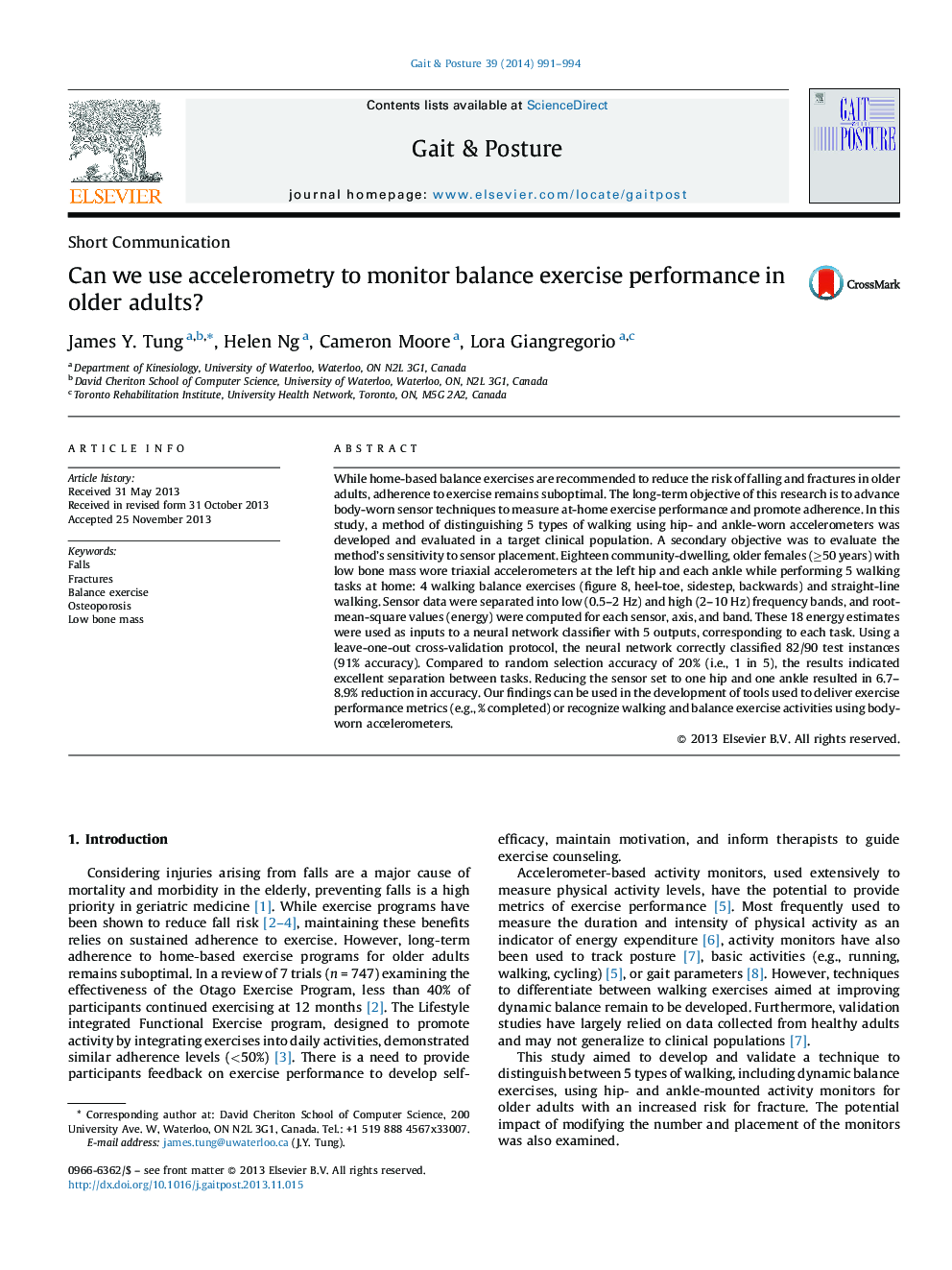| کد مقاله | کد نشریه | سال انتشار | مقاله انگلیسی | نسخه تمام متن |
|---|---|---|---|---|
| 6206586 | 1265648 | 2014 | 4 صفحه PDF | دانلود رایگان |
- A method of classifying walking balance exercises from accelerometers was developed.
- Validation data was collected from 18 community-dwelling seniors with low bone mass.
- Using 3 accelerometers, the method accurately classified 91.1% of test instances.
- Reducing the sensor set to 2 resulted in 6.7-8.9% reduction in accuracy.
- The findings support development of tools to measure at-home exercise performance.
While home-based balance exercises are recommended to reduce the risk of falling and fractures in older adults, adherence to exercise remains suboptimal. The long-term objective of this research is to advance body-worn sensor techniques to measure at-home exercise performance and promote adherence. In this study, a method of distinguishing 5 types of walking using hip- and ankle-worn accelerometers was developed and evaluated in a target clinical population. A secondary objective was to evaluate the method's sensitivity to sensor placement. Eighteen community-dwelling, older females (â¥50 years) with low bone mass wore triaxial accelerometers at the left hip and each ankle while performing 5 walking tasks at home: 4 walking balance exercises (figure 8, heel-toe, sidestep, backwards) and straight-line walking. Sensor data were separated into low (0.5-2 Hz) and high (2-10 Hz) frequency bands, and root-mean-square values (energy) were computed for each sensor, axis, and band. These 18 energy estimates were used as inputs to a neural network classifier with 5 outputs, corresponding to each task. Using a leave-one-out cross-validation protocol, the neural network correctly classified 82/90 test instances (91% accuracy). Compared to random selection accuracy of 20% (i.e., 1 in 5), the results indicated excellent separation between tasks. Reducing the sensor set to one hip and one ankle resulted in 6.7-8.9% reduction in accuracy. Our findings can be used in the development of tools used to deliver exercise performance metrics (e.g., % completed) or recognize walking and balance exercise activities using body-worn accelerometers.
Journal: Gait & Posture - Volume 39, Issue 3, March 2014, Pages 991-994
